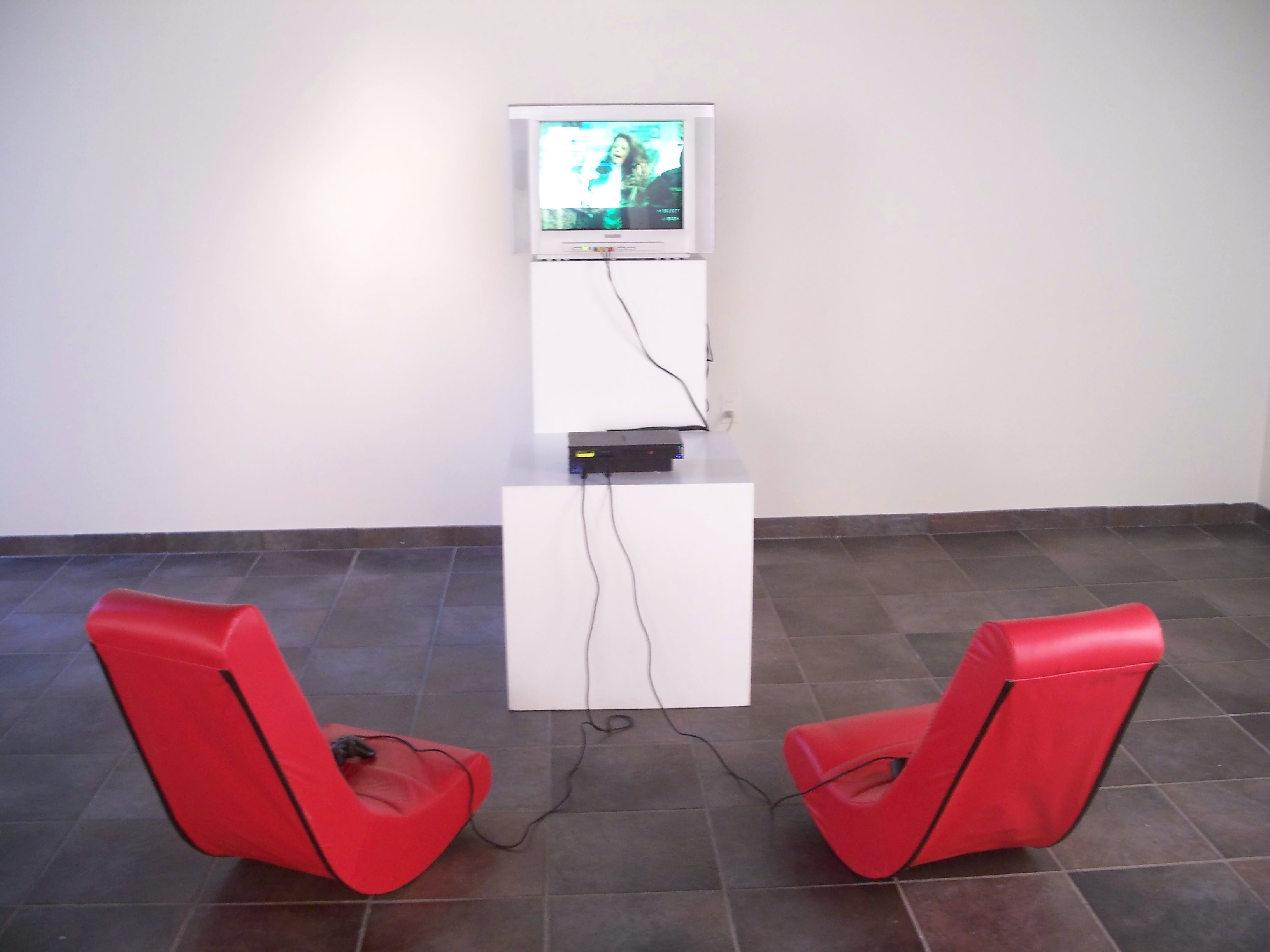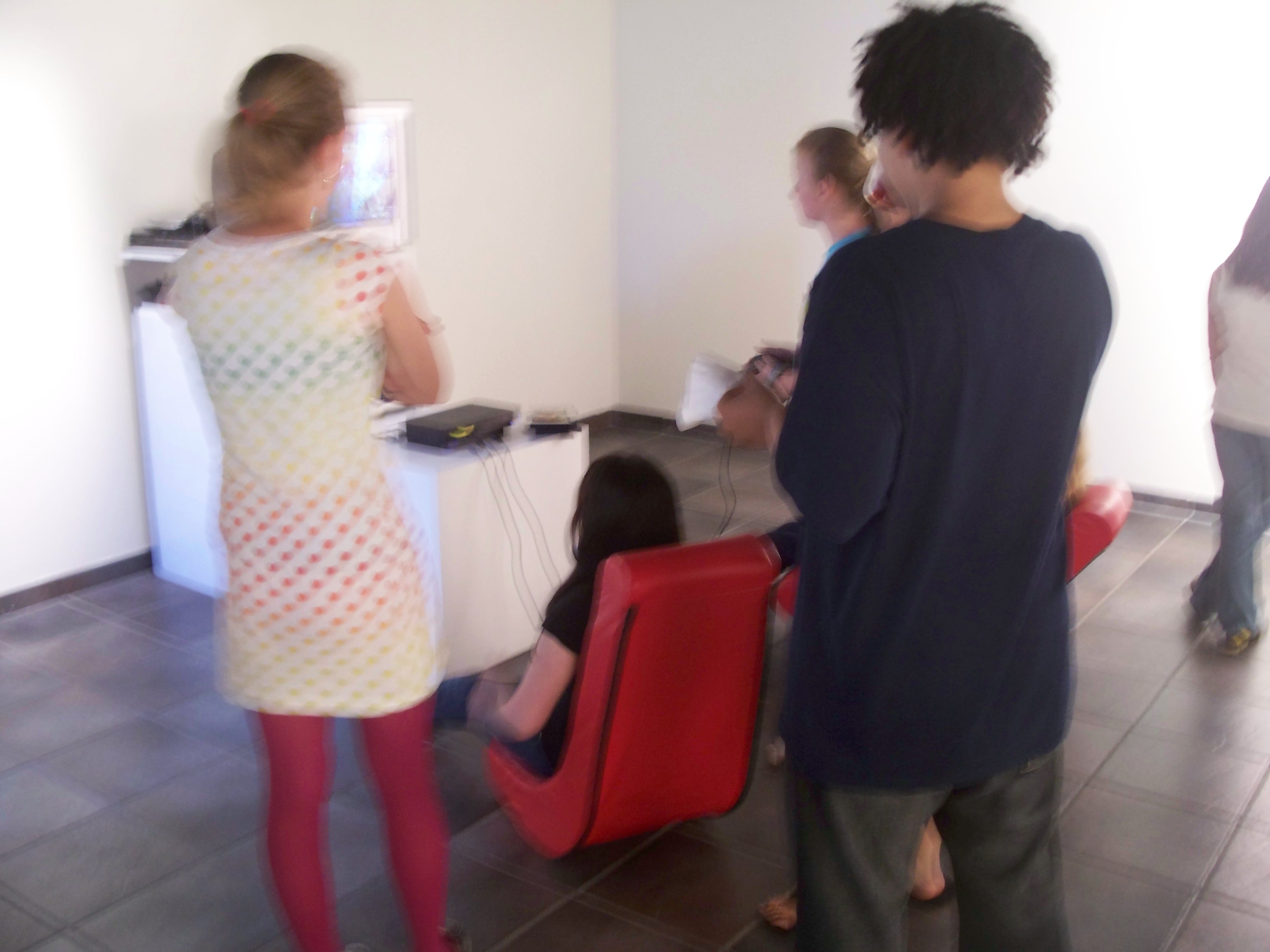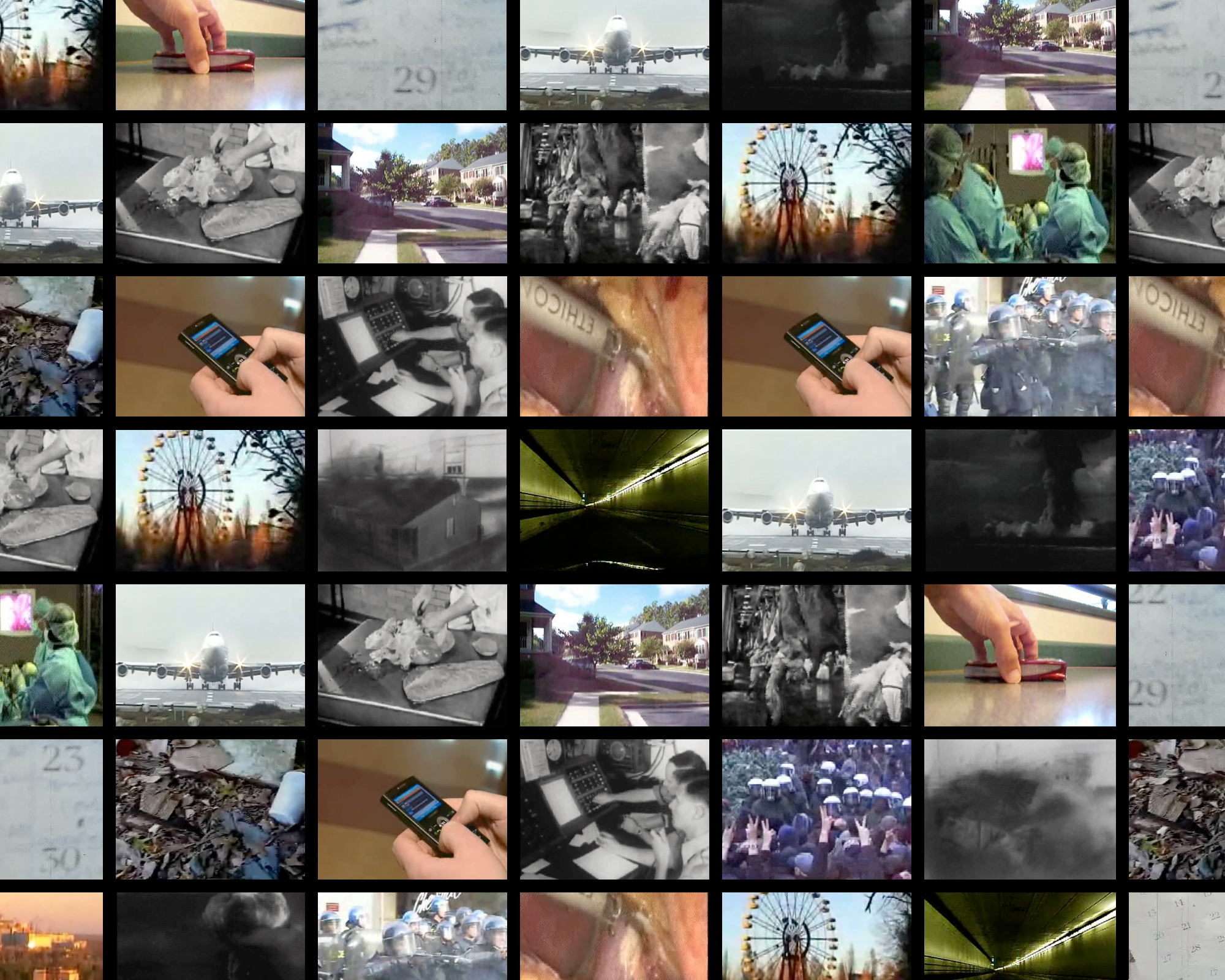Sara D – voice
Mark Cooley – guitars, video
Herb White – organ, moog
Kifah Foutah – drums
Bushmeat – text, synth, efx
His Brother’s Stone (from The Way of Torn Flesh by Bushmeat Sound System) from flawed art on Vimeo.
Sara D – voice
Mark Cooley – guitars, video
Herb White – organ, moog
Kifah Foutah – drums
Bushmeat – text, synth, efx
His Brother’s Stone (from The Way of Torn Flesh by Bushmeat Sound System) from flawed art on Vimeo.
The Ten Mile Yard Sale from flawed art on Vimeo.
A film by Mark Cooley & Derek Ellis
Wanted. a video installation by beth hall & mark cooley
Safe
video installation by beth hall, mark cooley & celia cooley | 2012
Maternalisms exhibition catalog by Natalie Loveless
The popular imagination is heavily invested in a deeply romanticized conception of the maternal. The laborious, messy and complex beauty of living with children is lost in countless sanitized and idealized images of a superficial, strictly gendered, privatized and heavily branded maternity. Popular culture gives a pre-packaged answer to the complex questions of parenting in a quickly changing world. For some, parenting is narrowed to a list of milestone purchases – graduating kids through a series of child development books, baby seats, bicycles, cell-phones, computers, cars, and so on into adulthood. Those who prefer a critical and active approach to parenting soon discover that information and disinformation abounds, and critically engaged parenting can quickly lead to significant research skills. Though the labor of caring for children is generally maligned in popular culture, if given attention, the daily rituals of child care-giving reveal a beauty based on a system of values radically different to those conjured by the media’s constant appeals to our well cultivated sense of alienation, self-interest and irrational fears.
Safe from flawed art on Vimeo.
“As philosopher of science Isabelle Stengers puts it, “an idea always exists as engaged in a matter, that is as ‘mattering.'”9
Inhabiting the space between detailed local care practices and the social frame- works enmeshed with them, beth Hall and Mark cooley’s Safe explores how ideas are engaged in matter and matters engaged in ideas. Safe juxtaposes the overwhelming medical data, advice, and rules that face parents in the information age with specific actions that invoke the maternal everyday: hand washing, hair brushing, flossing, etc… As accompaniment to these texts and images, a fetal heartbeat repeats and multiplies in the background, creating a soundscape of the periodic monitoring that punctuates modern pregnancy and stands as evidence that all is right and safe in the womb. At the same time, this soundscape insists on the anxiety of information, an anxiety that obstructs any ability to even entertain the fiction of unmediated experience, freighted as we are by the immensity of information and disinformation characteristic of contemporary motherhood.”
– Natalie Loveless – New Maternalisms exhibition publication.
Condolences from flawed art on Vimeo.
Condolences | 2011
Video, Mark Cooley
hope and hopelessness 10 yrs. into an endless war.
 Ps4
Ps4
2008 – 2011
“Kids in Congo were being sent down mines to die so that kids in Europe and America could kill imaginary aliens in their living rooms.” – Oona King, former member of the British Parliament.

For over a decade, war has ravaged the Democratic Republic of the Congo (DRC). Fueled, in part, by an intense demand for natural resources, the war has claimed over 5 million lives. Coltan (Columbite-tantalite), a metallic ore from which the element tantalum is extracted, is one of the DRC’s most sought after resources. Tantalum is widely used in common electronic devices such as cell phones, computers and video game consoles.
Ps4 is an interactive video mash-up that juxtaposes documentary video footage with live video gameplay. Though initially conceptualized in response to reports of Sony’s large stake in the DRC’s bloody coltan trade during the production of its Playstation 2, Ps4’s playlist has since expanded to look at a variety of issues. On a general level, Ps4 explores the potentially alienating effects of gaming by derailing the seamless gameplay experience and offering a problematic and politicized view of so-called “immersive” leisure activities.
Documentary footage,”Congo’s Bloody Coltan” Produced by, and used with permission from, thePulitzer Center.
Publications
PS4. Mark Cooley. Media Fields Journal

Launch project: (Dis)Location, (Dis)Connection, (Dis)Embodiment
(Dis)Location, (Dis)Connection, (Dis)Embodiment is a collective experiment in database video and random access narrative. The installation is the work of many artists, each responsible for thirty seconds of video attempting to engage with paradoxes of digital culture and 21st. century communications. The installation consists of a database containing the media contributions of each artist. A computer randomly retrieves video and audio and juxtaposes the media fragments in ten-second intervals on three projected screens and three stereo output systems. The process provides an endlessly randomized deconstruction and reconstruction of narrative and associative imagery in which meaning simultaneously forms and dissolves and the usual stabilities of conventional video are put in flux.
Project concept: Mark Cooley and Edgar Endress
Project architecture: Mark Cooley
Participating Artists:
Jacqueline Aceto, Jenifer Ashcroft, George Baker, Brigitte Balla, Sean Blackford, Said Boissiere, Bridget Borley, Juan Botero, Tara Bowen, Lindsey Burnett, Nicholas Carson, Luis Cavero, Robert Cowling, Brian Dang, Daniel Dean, Jessica Engel, Jennifer Fairfax, Jennifer Farris, Emmanuel Freeman, Jessica Gibson, Lance Gunther, Tyler Harris, Moises Herrera, Franklin Hwang, Maurice James, Andrew Ke, Arthur King, Julie Koziski, Peter Lawrence, Chongha Lee, Andrew Meinecke, Michael Merrill, Aaron Miller, Eli Mintzer, Julia Moscato, Nichole Mosher, Sarah Newdorf, Brent Nieder, Kelvin Olayinka, Adrian Peters, Jose Ruiz, Sorphea Sam, Michael Sargent, Nelly Sarkissian, Paul Sauter, Christina Schnittker, Matthew Searle, Alex Straub, Aisha Syed, Mohamed Talaat, Eric Tsai, Sean Watkins, Nestor Zerpa, Yerden Zikibayev

The Field museum of Art
2007
This museum, its exhibitions, the artists, the art are all fictions – as it is with all museums, exhibitions, artists and art. This particular fiction is constructed as a sort of museum mash-up wherein a Fine Art Museum is constructed on the bones of a decayed Natural History Museum site – specifically, the Chicago Field Museum website was used as a template.
The Field Museum of Art site provides a stage for performing romantic and modernist attitudes toward this concept we call nature and for tracing how this concept – nature – and the living things and planetary systems it’s tied to, are changing in response to media and communications technologies. Of particular interest is the relationship between hyperreality and species extinction – investigating that relationship and marking out the real differences between a pulsing LED and a pulsing vein are primary concerns of The Field Museum of Art.